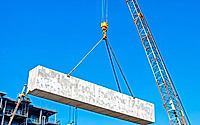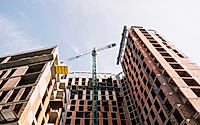Behind the Scenes: The Role of Rigging in Architectural Marvels
When you admire iconic buildings like the Sydney Opera House, the Louvre Abu Dhabi, or the Shard in London, you likely appreciate their beauty and innovative designs. However, few realize the crucial role that rigging plays in bringing these architectural marvels to life. Rigging, a specialized process involving the lifting, positioning, and securing of heavy construction materials, remains often unseen yet essential in transforming visionary designs into reality.
Understanding Rigging: The Invisible Hand in Architecture
At its core, rigging entails the careful handling and positioning of large structural components. Experts skillfully maneuver heavy elements into place using cranes, hoists, pulleys, and various rigging equipment. Executing intricate and ambitious architectural designs would be impossible without this essential step.
Architectural rigging is far from simple. It requires detailed planning, advanced equipment, and highly skilled professionals collaborating closely with architects, engineers, and construction teams. Together, they overcome complex challenges posed by unique building designs and construction environments.
Planning and Precision: Foundations of Successful Rigging
Rigging in architectural projects begins long before any component is lifted. Extensive planning involves analyzing weight distribution, structural integrity, environmental conditions, and logistical considerations. Each piece must be carefully accounted for in iconic structures to ensure smooth operations.
For example, when constructing the renowned “Bird’s Nest” stadium in Beijing, riggers carefully coordinated the lifting and placement of large steel beams weighing hundreds of tons. Accurate calculations were essential in preventing structural misalignment and ensuring overall stability.
Innovation in Rigging Techniques
Advancements in technology have dramatically transformed rigging processes, enabling the creation of more ambitious architectural designs. Hydraulic gantries, modular lifting towers, and custom-engineered slings have become essential in modern rigging operations, empowering architects to aspire to greater heights.
A notable example is the construction of the Louvre Abu Dhabi, whose enormous, intricate dome structure required groundbreaking rigging techniques. Riggers employed an innovative hydraulic lifting system to position the dome precisely, creating the illusion of floating effortlessly above the museum.
Case Studies: Rigging the Impossible
One of the most remarkable examples of rigging excellence can be seen in London’s Shard skyscraper. During its construction, massive glass panels weighing several tons each were lifted hundreds of meters above ground level, requiring unprecedented precision and safety measures. Specially designed rigs and cranes facilitated the seamless installation of these panels, transforming an ambitious architectural vision into reality.
Similarly, rigging played a crucial role in the construction of Dubai’s Burj Khalifa, the tallest building in the world. Rigging teams had to lift materials over 800 meters into the sky, navigating extreme winds and temperatures. This required specialized cranes and precise coordination to ensure safety and efficiency in the process.
Safety First: Ensuring Structural Integrity
Safety is paramount in rigging operations due to the scale and potential risks involved. Each rigging plan includes comprehensive safety protocols, detailed risk assessments, and contingency strategies. Skilled riggers and engineers diligently monitor operations to ensure compliance with safety standards and mitigate hazards.
For example, during the rigging process of complex structures like the distinctive shells of the Sydney Opera House, extensive simulations and stress tests were conducted beforehand. These proactive measures helped prevent potential accidents, ensuring the safety of workers and the structural integrity of the iconic building.
Rigging’s Unsung Heroes: The Specialists Behind the Scenes
Behind every architectural marvel are riggers whose expertise and precision seldom receive public recognition. These professionals possess a distinctive blend of technical knowledge, practical experience, and problem-solving skills, making them essential to complex architectural projects.
Their work demands patience, courage, and meticulous attention to detail. They frequently operate under challenging conditions, navigating physical risks and engineering obstacles to execute designs flawlessly.
The Future of Rigging in Architecture
Looking ahead, rigging will continue to evolve alongside architectural innovation. Emerging technologies such as automated systems, drone-assisted rigging, and improved safety equipment promise greater efficiency and even bolder projects.
As cities expand upward and architects push the boundaries of design, rigging will remain a crucial element in creating structures that inspire and captivate. It will continue to enable architects and designers to achieve the extraordinary, reshaping skylines worldwide.
Final Thoughts
Next time you look at an architectural masterpiece, think about the hidden and intricate rigging work involved in its construction. Although rigging may be an unseen craft to many, it undeniably influences our built environment, facilitating the breathtaking and ambitious designs that characterize modern architecture.
- by Matt Watts





